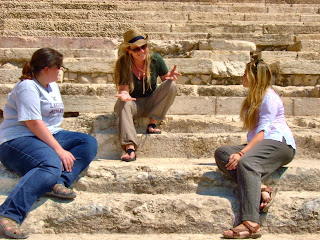ZECNT (James): An Interview with Craig Blomberg
As many of you know who attended ETS/SBL, Craig Blomberg and Mariam Kamell co-wrote the Zondervan Exegetical Commentary on James, the first appearing in this brand new series. Craig Blomberg, Distinguished Professor of New Testament at Denver Seminary, was kind enough to answer a few questions about this new commentary.

1) Craig, you have reviewed, read, and written many commentaries. Talk a bit about what makes the ZECNT unique, and why this series should be on the desk of pastors and students alike.
The format is distinctive and creates a one-stop shopping resource for the busy pastor or teacher. Readers can find for each passage of preachable length the literary context, the main idea, the grammatical structure of the Greek text, an exegetical outline, verse-by-verse commentary, and a substantial section called "Theology in Application" which highlights other places in Scripture where the key themes of the passage appears and then suggests key applications of that theme more generally.
2) Many disagreements about the structure of James exist (lack of coherence, etc.). With the graphical layout feature of the ZECNT, do these questions about the structure of the epistle reach any resolutions?
We think we have come up with a plausible outline and we discuss briefly in our introduction why we favor it over the main alternatives. But whether readers think we have reached a resolution will be for them to determine!
3) What surprises might the reader encounter in their reading of James (for example James 2.17ff: 'faith v. works')? 2:18ff.?
Well, our resolution of the supposed tension between James and Paul on this topic proves little different from what a number of evangelical commentators have been saying over the last half-century, but our explanation of the puzzling question of who is saying what to whom in vv. 18-19 receives an answer that we have retrieved from a century or more ago, which has not been defended in quite a long time!
4) Could you talk a bit about your collaboration with Mariam Kamell on this commentary?
Mariam was one of my M.A.N.T. students. I was her thesis advisor and then she was my research assistant for two years. Now she is finishing her Ph.D. thesis in St. Andrews. She has worked on James this entire time so she was a natural partner to select for the project. Three or four friends at other institutions have done this kind of thing with their students and their model challenged me to consider doing it as well. It's a win-win situation all around. While I certainly did more than just 50% as much work as I would have done had I worked on my own, it was still considerably less than the amount that would have been required had we each not researched and written first drafts of different sections of the book before comparing, critiquing and revising each other's material. And it gives Mariam a nice publication feather in her cap as she begins the job hunting process.
5) One of the strong points of this commentary are the Theology in Application sections at the end of each unit. Could you talk a bit about the challenges of writing these pieces in finding the significance and relevance of how James' epistle speaks to Christians and the church in concrete and practical ways?
I think I'm wired more than many scholars in the direction of practical application and I know Mariam is. So, once you have lived with the material exegetically for some time and reviewed what writers before you have done when they have created applications, so many ideas suggest themselves that we really had to be selective in terms of which we included.
Thanks for your time, Craig!

Comments
Thanks for posting this interview. Looks like a great series and a fine way to start it off.